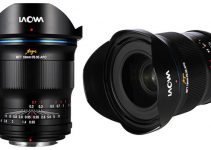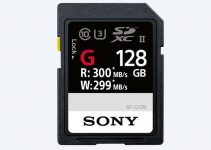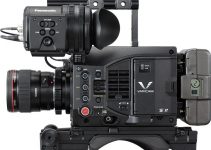Have you ever tried to ingest any type of drone footage in your NLE? If the answer is “yes”, you already know that the native playback and editing of these clips can be a bit of a struggle.
The workflow gets even worse when you import those files in DaVinci Resolve 12.5. Even though the software is relatively optimized for playing back and editing multiple formats and codecs you need to have a considerably powerful workstation to be able to work with those files flawlessly.
Fortunately, there is a simple workaround that will help you to deal with this tedious issue. Casey Faris unveils his personal workflow and the way he copes with drone footage in Resolve 12.5 in the video tutorial below.
In essence, optimized media is a powerful feature that let Resolve users generate proxies out of the original footage, thus being able to play back any clip imported in the software smoothly and flawlessly. The fastest way to optimize your media inside DaVinci Resolve 12.5 is by selecting either a single clip or bunch of those and then by right-clicking you need to navigate to Generate Optimized Media.
The best part is that you can always go back to your original files. All you have to to do is head over to Playback in the top menu and disable Use optimized Media if Available. This is the fastest way to toggle between your original footage and the proxies you’ve created. By default, Resolve 12.5 will automatically switch to your high-quality media once you render the clips unless you enable this function manually. When using optimized media, you can also reveal an additional column in the Media Pool’s list view, which lets you see which clips have been optimized, and which clips haven’t.
Furthermore, if you want to get rid of your proxy files you can go to Playback and choose Delete Optimized Media. You can also set the type of the codec for your optimized media. Just access the main settings button placed in the bottom right corner of your screen, then go to General Options and choose the appropriate codec under the optimized Media tab. If you are a Windows user you can choose any of the available Avid DNx flavors, and if you are working on a Mac machine Apple ProRes should be the predominant choice for your workflow.
It’s also great that the optimized media will work when it comes to color grading. As Casey showcases there is a slight difference between the original files and the transcoded ones so it shouldn’t be an issue to edit and color grade your footage by using proxies and then export your project by utilising the original media once you’re done with the post-production workflow.
All in all, the proxy media will give you a pretty decent representation of your original footage, plus it’s an excellent way to edit and grade seamlessly high-quality video files on systems with limited processing power.
[source: Casey Faris]
Disclaimer: As an Amazon Associate partner and participant in B&H and Adorama Affiliate programmes, we earn a small comission from each purchase made through the affiliate links listed above at no additional cost to you.





Thank you so much for this info!! So helpful. I’m a DaVinci noob and I was making my own proxy files. Wow, love this.
Also, you were a bit hesitant to say that Resolve could be used for the complete production, although possible: where do you see it ideally fitting into a workflow? Could you offer examples of other software you would use along side of Resolve and their primary purposes for a low budget content creator? Thanks
Hi Mike. Not sure this will help a ‘low budget’ content creator but here’s my contribution: Resolve originally met all our colour-correcting and grading needs. Films were compiled on other non-linear editing (NLE) apps then imported into Resolve for colouring. I used Adobe Premiere Pro. Since DaVinci incorporated a professional quality editing mode, there is probably no need for separate editing software. My investment with Adobe is huge and annoying. I also use Audition, Encore, After Effects and Photoshop. Media Encoder is great and where would we be without Adobe Acrobat? I’m hooked. But if I was starting out today, with huge budget restrictions, it would be DaVinci Resolve all the way: editing, colouring and output.
Mike G – Resolve is limited in useful output formats like H.264 mpy which is playable on most devices. I output using Cineform the input that into free GoPro Studio which uses the Cineform codec. Then export from GoPro Studio a variety of formats like mp4. Hope that helps.
Much easier way. Use SmartFFMpeg (Free GUI) and just re-wrap your Resolve H.264 MOV files to MP4. Fast and Easy. VLC can also convert it.
The codec would still be h.264 using that method…. so it will still be choppy or laggy. Transcoding (generate optimized media) is the only way to change the codec.
I was about to give up using Resolve. I looked at all sorts of tutorials on how to stop the lag and stop it crashing, but this is the answer. Everything now works perfectly. Thank you!
Which ProRes is best for optimized media?